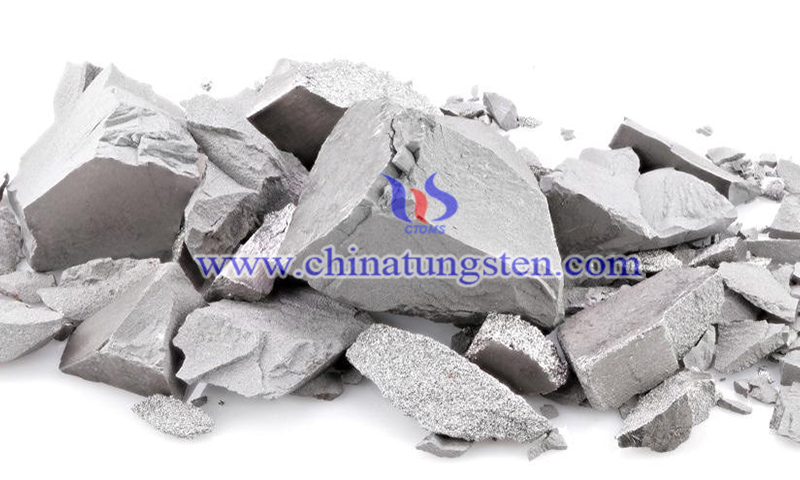Ultra-Thick Tungsten Coatings Applied in Fusion Armor
- Details
- Category: Tungsten's News
- Published on Thursday, 02 December 2021 22:54
- Written by Caodan
- Hits: 786
Due to its strong heat conductivity, very higher melting and boiling point and low vapor pressure, minimal physical erosion rate, and low tritium retention, tungsten is a promising material for plasma-facing applications in fusion reactors. Ultra-thick tungsten coatings host significant applications in fusion armor.
The use of ultra-thick millimeter tungsten coatings as expendable armor to resist plasma impacts from shunts and elsewhere is often considered necessary to safeguard the underlying structural components.
However, tungsten has its own drawbacks such as high fabrication temperatures, low processability and susceptibility to oxidation, all of which affect fabrication. Since the coefficient of thermal expansion of tungsten is considerably lower than that of ferrite/martensitic steels such as EUROFER97 or copper, joining tungsten to an underlying structural element such as a ferrite/martensitic steel such as EUROFER97 or copper is a considerable problem.
The temperature excursions encountered during fabrication and service inevitably result in significant thermal expansion mismatch stresses at the tungsten/steel contact of this combination.

These strains, and the potential strain energy associated with them, can lead to debonding of the tungsten coating and catastrophic fractures near the interface plane, resulting in delamination of the coating. Thus, despite being only a few hundred microns thick, the typical tungsten coating on iron has insufficient thermal cycling capability.
Due to the large difference in melting points, tungsten/steel connections are often done independently of the tungsten fabrication. Alternatively, the outer coating of tungsten can be deposited directly onto iron or other materials by deposition methods.
The deposition of thin interlayer layers of tungsten and steel to produce graded interfaces has been investigated using heat transfer mismatch strain control techniques such as air or vacuum plasma spray (APS, VPS) of tungsten or droplets in liquid form. The goal of the graded interface technique is to spread the thermally induced stress over a larger area of material and reduce the likelihood of failure of discrete interface delamination.
A field-assisted sintering process is used to create button-shaped tungsten on steel samples in cylindrical high-density graphite die (FAST). In FAST, a cold-pressed powder compact is heated by placing an electric current between the mold and the powder material, causing rapid Joule heating. To promote sintering, uniaxial pressures of up to 50 MPa are typically applied simultaneously.
To avoid heat loss during the whole FAST process, each die is covered with carbon felt. To prevent direct contact between the die/punch set and the sintered material, top and bottom layers of graphite foil were used inside the die. At the bottom of the die, a steel disc substrate was placed.
The tungsten nanopowder was placed in a mold and pressed to encourage uniform dispersion and penetration into the pre-engraved metal surface after any spark-induced surface oxidation was removed by glass bead blasting and cleaning. Coatings of various thicknesses were produced using 4, 6, and 8 gram tungsten weights.
The substrate is much thicker than the coating, resulting in no appreciable substrate deflection and a significant thermal expansion mismatch, resulting in a larger strain energy per unit volume in the coating than in the substrate.
As the coating thickens and reaches the thickness of the substrate, the strain energy per unit volume of the coating and the substrate become more similar, based on the difference in their Young's modulus; in extreme cases, the coating is so thick that it effectively functions as a substrate.
In order to limit the catastrophic effects of thermal expansion mismatch stresses on coating delamination, a field-assisted sintering method was investigated to produce a thick and dense tungsten coating immediately on a prefabricated AISI 416 steel substrate.
The method is effective in producing tungsten coatings with intentionally produced segmental cracks and equiaxed, randomly distributed 200 nm grains. In the fabricated state, the coating segments remain firmly adhered to the substrate after 300 to 800 thermal cycles in a dedicated furnace designed to mimic the temperature conditions necessary for fusion armor.
- Tungsten Manufacturer & Supplier, Chinatungsten Online: www.chinatungsten.com
- Tungsten News & Prices of China Tungsten Industry Association: www.ctia.com.cn
- Molybdenum News & Price: news.molybdenum.com.cn
- Tel.: 86 592 5129696; Fax: 86 592 5129797; Email: sales@chinatungsten.com





 sales@chinatungsten.com
sales@chinatungsten.com